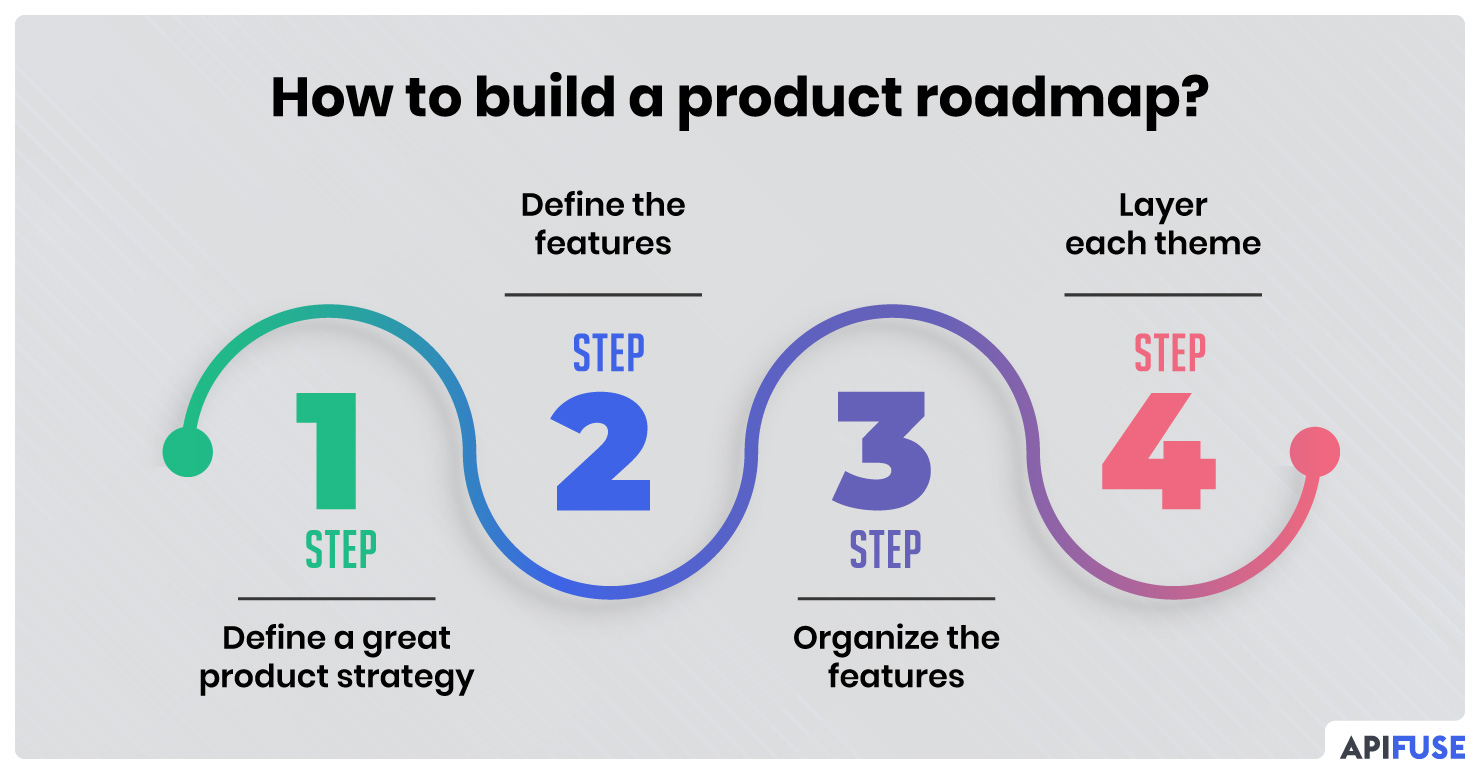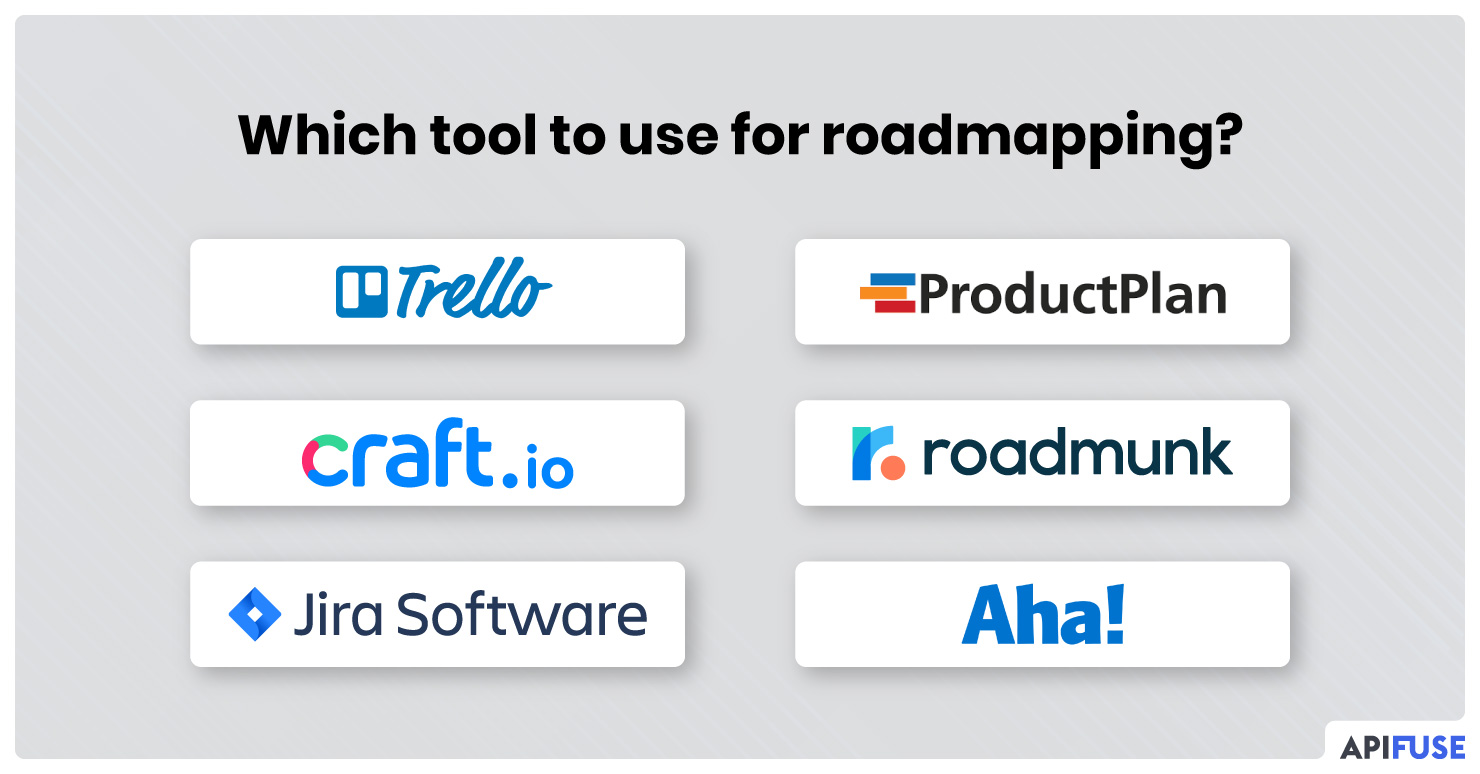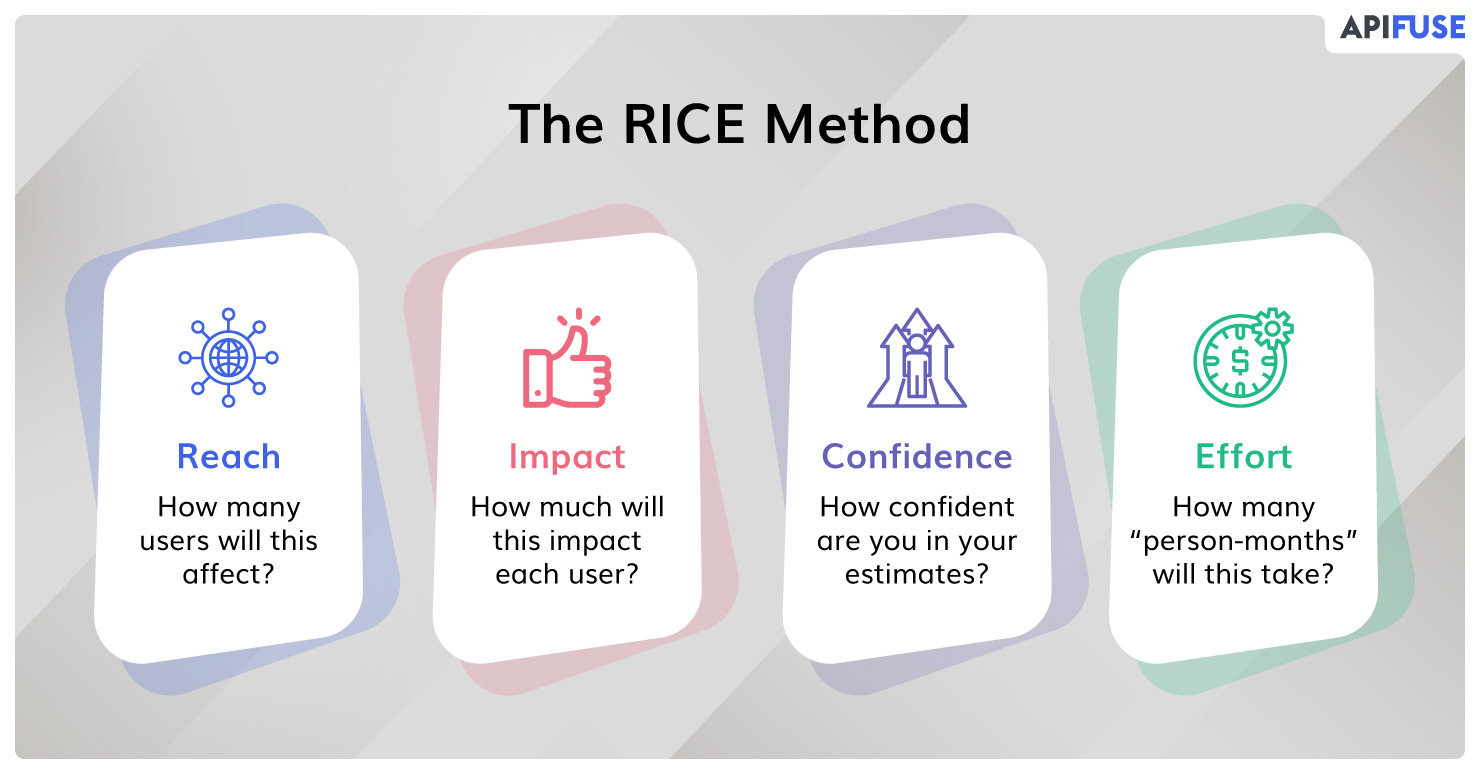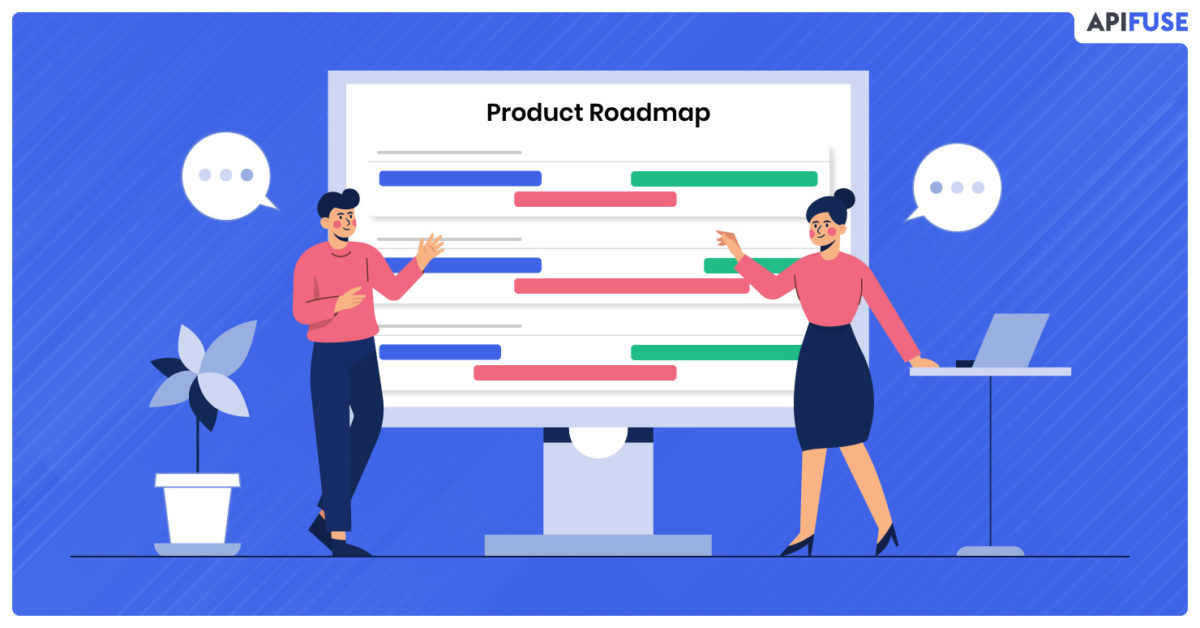Building a product roadmap is pivotal.
It forces you to evaluate where you want to invest and why. It lays out all the efforts you must make. It creates a timeline of features to be implemented. And it brings everything in alignment with your business objectives.
Building a product roadmap is also a skill.
It requires a quirky mix of planning, research, methods, and empathy. That’s why most SaaS product managers stumble their way through roadmapping. There is so much to include in roadmaps and so many ways to plan them that building one without a practical guide is a tall order.
What is a Product Roadmap?
Think of the product map as an overarching strategy on how and when, with both changing with time.
A product roadmap is a document and a visual communication tool. It aligns your business with a high-level product strategy, and it shows where the product is expected to go.
It is an actual map of how the SaaS application evolves over time, displaying the features, integrations, and technical considerations in the pipeline.
Some roadmaps also communicate what each team is expected to work on in the short term and long term. But, it is not a project management tool.
The roadmap doesn’t include the nitty-gritty of shipping dates and resource allocation. It only tells you what business goals and user outcomes you will build in a given interval. That interval can vary from one month to one year.
Why is it essential to build a product roadmap?
There is a surfeit of reasons why product managers should build a product roadmap.
- It describes your vision and strategy.
- It becomes the guiding light to implementing that strategy.
- It can be leveraged to communicate with customers.
- It encourages stakeholders to discuss various options for the product and plan each scenario.
The roadmap is also an excellent coordination tool. When you create a roadmap, you visually display all the moving pieces of developing a product.
That aids everyone involved in aligning their efforts and understanding the why behind each decision. It gives them the information required to focus on individual goals and allocate resources accordingly.
But the underpinning reason is – it is a great way to convince stakeholders. There are two paths to securing buy-in. You can either declare a lengthy statement accompanied by a boring presentation. Or you can show a product roadmap.
The former is hard work, requiring serious design skills with a low probability of success. The latter is faster, with exceptionally high chances of success.
Roadmaps have visual clues like groupings and color-coding. These elements create a rich and compelling story that’s easy to consume. Consequently, they sway stakeholders more persuasively.
What are the types of product roadmaps?

There are many ways to go about roadmapping from scratch. Which one you pick depends on many factors such as personal preference, growth stage, and company culture. That said, three frameworks fit most SaaS businesses.
1. No-dates Product Roadmap
Early-stage SaaS organizations require flexibility. They cannot be bound by fixed timelines because they have two chief goals. One, to search for product-market fit. Two, to land their first users.
When your primary objective is to sink your hooks, the product road has to be pliable with agile development. For such cases, the no-dates product roadmap is ideal.
This type of roadmap focuses on attracting innovators – users who are first to adopt the product because they are interested in trying new tech. The no-dates roadmap reflects the needs of innovators and is typically organized by themes or sprints.
Use the swimlane view to sort tasks as it delivers more flexibility. Tracking is done on progress, not time.
2. Hybrid Product Roadmap
Development teams who want to focus on early adopters and early majority users are best suited for hybrid product roadmaps. Not purely agile teams; they need the limits of dates, so the roadmap includes them.
However, they are not hard dates. They are rather organized by the quarter or month with items marked as current, medium-term, and future.
Such a type of product roadmap factors in the very real need for speed while offering a soupcon of flexibility. Hybrid roadmaps provide transparency to the market and are aggressive with product visions.
3. Timeline Product Roadmap
This type of product roadmap befits product managers who target the deep end of early majority users. Of all the roadmap types, this is plotted on a complicated timeline. It is ideal for businesses that juggle a lot of dependencies.
The product map is organized by years and shows the long-term vision of the product.
Use the Timeline view to visualize how the SaaS applications unfold with time, with tasks organized in buckets of new features, stickiness, etc.
How to Build a Product Roadmap?

When you’re making a fresh start, it’s enticing to pick a handful of features and their release plan arbitrarily. As strong as the lure may be, product managers need to take a step back.
Successful product roadmaps are not designed on random time horizons and business goals. They are built through careful and strategic planning.
First, define a great product strategy.
The first step of all roadmap templates is the why – the reason for being. This is imperative because you will always have new product goals. Setting a baseline helps keep you on track and prevents a growing product backlog.
Why are you building the product? Who are your customers? What do you hope to accomplish? How does it help users? How will you go to market?
At this stage, you set the vision and objectives of your product. It helps you know that all your efforts in building an effective product will support the overall goals. During this phase, you also define the initiatives that back your product objectives.
Second, define the features.
The second step every roadmap template follows is the what – what features you want to include. The best options are the ones that support your product strategy.
Third, organize the features.
The third step is to sort the features into groups and then set their release dates. You can organize it either based on your development ability or on a launch date.
A common method of organizing is by themes because it gives a visual and narrative structure to a roadmap. Each theme matches either a basic requirement like security or a primary objective like more usage.
Themes use a swimlane view. So, within each theme, you have enough leeway to prioritize features yet to adapt to the realities of the market.
Another benefit of themes is that product teams don’t have to argue with external stakeholders that working on product stability should be prioritized over a feature that brings in more revenue. Each major theme gets a swimlane and, to that end, a piece of development resources.
Finally, layer each theme.
The last step to building a product roadmap is layering the theme with epics. Themes are generally broad. Breaking them down helps add in more details.
If need be, you can break epics into user stories that are executed in one sprint. Even user stories can be organized like features, by forming categories like tech similarities or business commonality.
Creating user stories with comprehensive requirements provides the product development team members with context.
Which tool to use for roadmapping?

You can use software like Excel, PowerPoint, or even Google spreadsheets to create a product roadmap. But the smart option is always using proper roadmapping tools like Trello, Product Plan, Craft.io, Roadmunk, Jira, Aha! They speed up the process exponentially.
What is the universal pain point in product roadmap building?
Prioritizing is the leading problem product managers face when roadmapping. When you have hundreds of ideas on specific features and just as many user requests for integrations, the going gets tough.
It is as crucial to finding out what doesn’t go on the roadmap as it is to find what does.
Including core functionalities that excite your team and end-users is essential. But that doesn’t mean you can side-track less-than-thrilling items. That way lies a mounting technical debt.
So, how do you decide which things get allocated time on the roadmap? By questioning yourself:
Does the item bring actual value to end-users?
Don’t fall back on gut feeling here. Use metrics, data, and documents to support and evidence the answer.
Does it fit the roadmap?
Don’t cram an idea merely because it is fantastic. It has to fit your priority list and scheduling chaos.
Does it have an owner?
When a feature request or integration demand has a champion, they fight for its inclusion. Plus, they have a nuanced understanding of it, which makes implementation easier.
You can also evaluate what makes it and what gets the ax by assessing the benefits and tradeoffs. There many methods that prevent you from being pennywise and pound foolish. One of the most common is the RICE method of prioritizing potential roadmap ideas.
What points to remember when roadmapping?

With time, you are expected to serve more users, integrate with more SaaS applications, and allow more core functionality. As a result, your product releases multiply, which is why the product roadmap cannot be rigid.
It is not a strict framework, neither are the details set in stone.
It is meant to evolve with time as your priorities and resource levels alter. When you create a roadmap, do so with buffers that allow course-correction, updates, and tweaks.
It is also not a static document.
The job of a product roadmap doesn’t end after it’s been presented. Product managers need to measure performance by following KPIs. You also need to update the status and progress.
It has to be rooted in data.
A reliable product roadmap is one that leverages qualitative and practical data to find the direction of strategy. Qualitative data is essentially user feedback. Empirical data comprises growth metrics and engagement stats.
It differs for a new product and a mature one.
1. The timeline
New products don’t have long-term plans on roadmaps. Established product roadmaps go deep into the future. The difference arises because new products can’t predict future opportunities with great accuracy.
In contrast, product managers of mature applications have a clear understanding of their users and the market. Ergo, they can predict requirements and make firm longer-term goals.
2. The releases
Mature product roadmaps have release dates that are far apart. On the other hand, a new product continually needs to ship. Subsequently, these roadmaps allow release plans with greater frequency.
3. The interdependencies
Product roadmaps used by startups don’t have too many dependencies because the number of regressions, third-party integrations, and core functions is limited. Legacy products have heavily dependent roadmaps, and moving from one project to another is not simple.
To sum up
Think of a product roadmap as a statement of intent. The simpler it is, the more effective its outcome. When roadmaps have clear and clean visuals, implementing them is effortless.
As simple as it sounds, hammering out a product roadmap does take effort. Moreover, building one varies from one business to another, at least to some degree. That said, you can lessen the burden and make the process more collaborative with this guide as a starting point.
API Fuse enables you to offer on-demand integration and to respond to end-users integration requests rapidly. With our solution and range of plans, you can provide users with native or custom integrations embedded directly into your SaaS app in minutes to accelerate your product roadmap and reduce technical debt. Request a demo today for more information!
